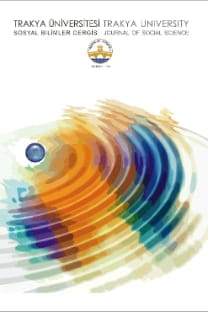GERÇEKÜSTÜCÜ HAREKETTE ÜTOPYA KAVRAMI
1924’de André Breton öncülüğünde Gerçeküstücülük Hareketi, içinde var olduğu düzene karşı en sert tavrı sergilemiş sanatsal ve kültürel akımlardan biri oldu. İki dünya Savaşı’na ve bu savaşlarda Batı Akılcılığı adı altında açıklaması yapılan ölüm ve soykırımlara yakından şahit olmuş ya da bizzat yaşamış sanatçılarca başlatılmış olan bu hareket, Dadaizm’le ortak bir düzen nefretini ve isyan duygusunu paylaşsa da, sorunlara onun gibi nihilist bir tavırla yaklaşmadı ve çözümler üretmeye çalıştı. Pozitif rasyonalizme, Batı ahlakına, sanayinin ve kapitalizmin yol açtığı eşitsizlik ve yabancılaşmaya karşı insanın hayal gücü, düşleri, sezgileri gibi kendi yetilerine dayanan güçleriyle savaşabileceğini öne sürdü. Manifestolarında temel vurgu, Freud’un psikanalizde uyguladığı psişik otomatizm yöntemini kullanarak rüya ile gerçekliği uzlaştırmak idi. Sanatsal üretimde rüyalara ve sezgilere öncelik tanıyan bu hareket, sanatı, romantik geleneğin ona atfettiği yüceliğinden arındırmaya ve her insanın hayatında var olabilecek bir uygulamaya dönüştürmek istemekteydi. Bu şekilde, Gerçeküstücülük, katı dış gerçekliğe karşı sanat-hayat, rüya-gerçeklik uzlaşımlarını önermekteydi. Bu, bir anlamda, Saint Simon, William Morris ya da Fourier gibi öncülerinin de anılması gereken, sanat-hayat ilişkilerini uzlaştırmaya yönelik sosyalist bir ütopya idi
Anahtar Kelimeler:
Gerçeküstücülük, ütopya, modernizm
THE CONCEPT OF UTOPIA IN THE SURREALIST MOVEMENT
The Surrealist Movement, whose purposes were defined first in the manifesto written by the movement’s leading figure Andre Breton, is considered to be one of the most ambitious and influential artistic and cultural protestation against the system prevailing at the time. Propounded by a group of artists who had either witnessed or experienced in person the atrocity and the genocides of the two world wars masked under the guise of Western Rationality, the surrealist movement approached Dadaism in its rebelliousness and hatred of order. Nevertheless, its attitude towards the problems was not nihilistic as in Dadaism but constructive. It held the belief that fighting against positive rationalism, Western morality, inequality and alienation caused by industrialism and capitalism is possible through recourse to imagination, dreams and intuitions which are within reach of the human’s capacities. The main emphasis in their manifestoes was to reconcile dream with reality through the Freudian psychoanalytic method of psychic automatism. Foregrounding the importance of dreams and intuitions in artistic production, this movement attempted to liberate art from the sanctity attributed to it by the Romantic tradition and to transform it to an experience in every person’s life; to this end, it suggested a reconciliation between art and life, and dream and reality against a harsh external reality. This, in a sense, was a sort of socialist utopia that aimed at a reconciliation of art and life, whose precursors could be traced back to figures such as Saint Simon, William Morris and Fourier
Keywords:
Surrealism, utopia, modernism,
- ISSN: 1305-7766
- Yayın Aralığı: Yılda 2 Sayı
- Başlangıç: 2000
- Yayıncı: Trakya Üniversitesi Sosyal Bilimler Enstitüsü
Sayıdaki Diğer Makaleler
ÖĞRETMEN ADAYLARININ TARTIŞMA BECERİLERİNE YÖNELİK TUTUMLARI
RUSYA'DA ERMENİ KİLİSESİ KRİZİ VE KRİZİN OSMANLI-ERMENİ İLİŞKİLERİNE ETKİLERİ
ANA HATLARIYLA LEO STRAUSS AÇISINDAN EZOTERİK YAZIM TARZI VE İSLAM FİLOZOFLARIYLA İLİŞKİSİ
MOSKOVA ANLAŞMASI VE TÜRKİYE’NİN KUZEY-DOĞU SINIRI
ÖĞRETMEN ADAYLARININ KİTAP OKUMA ALIŞKANLIKLARININ İNCELENMESİ
